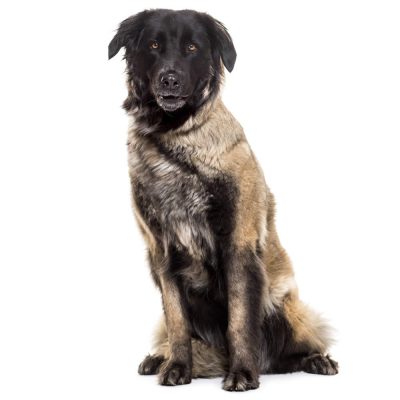Appearance: Large, mastiff-type molossoid dog. There are two varieties of coat: long and short. Rustic, substantial, with brisk gait and an impressive attitude. Breed has a lively, calm and expressive look; it is well proportioned; well made with harmonious appearance, which is traditionally how the breed has been recognised since a long time.
Temperament: Inseparable companion of the shepherd and faithful flock guardian, bravely protecting it against predators and thieves. Wonderful farm and house guard, distrustful towards strangers and typically docile to its master.
Coat: Strong, very abundant, slightly coarse, without excessive harshness, the texture is similar to goat hair. The undercoat is composed of fine hair, short, abundant and entangled, normally lighter in colour than the outer coat.
Long-haired variety: Straight or slightly wavy topcoat, uneven in some areas. It is shorter and more dense on the limbs, below the elbows and hocks, as well as on the head; on the ears, it becomes gradually shorter from the base to the tip, becoming thinner and softer. It is longer on the tail, which is bushy, thick and feathered, around the neck and throat and on the buttocks, which are abundantly feathered, as well as the back side of the forearms.
Short-haired variety: Short hair, evenly distributed over the body, slightly shorter on the head and limbs, without feathering.

